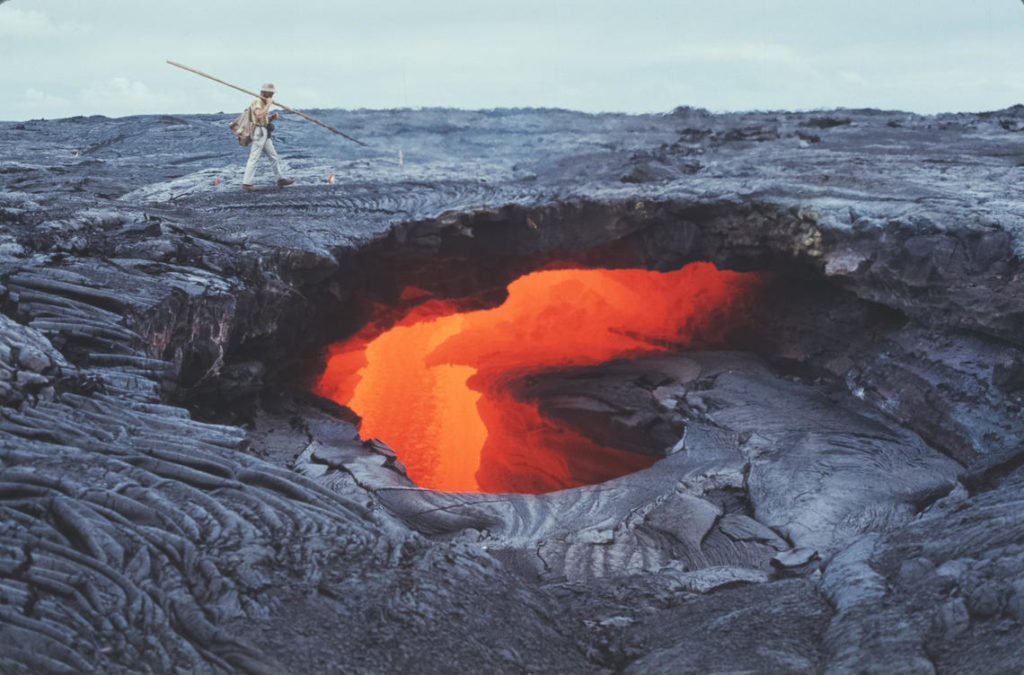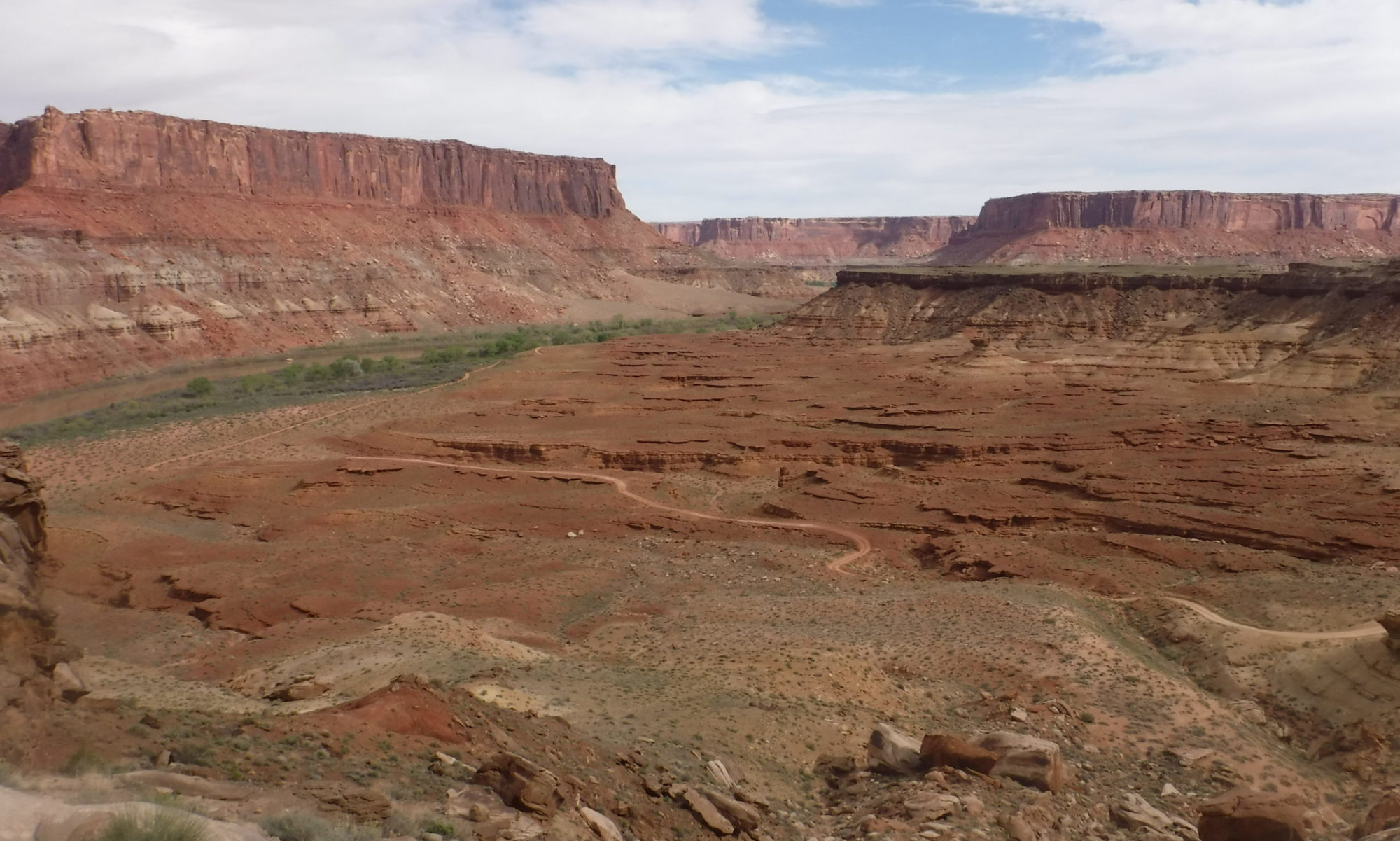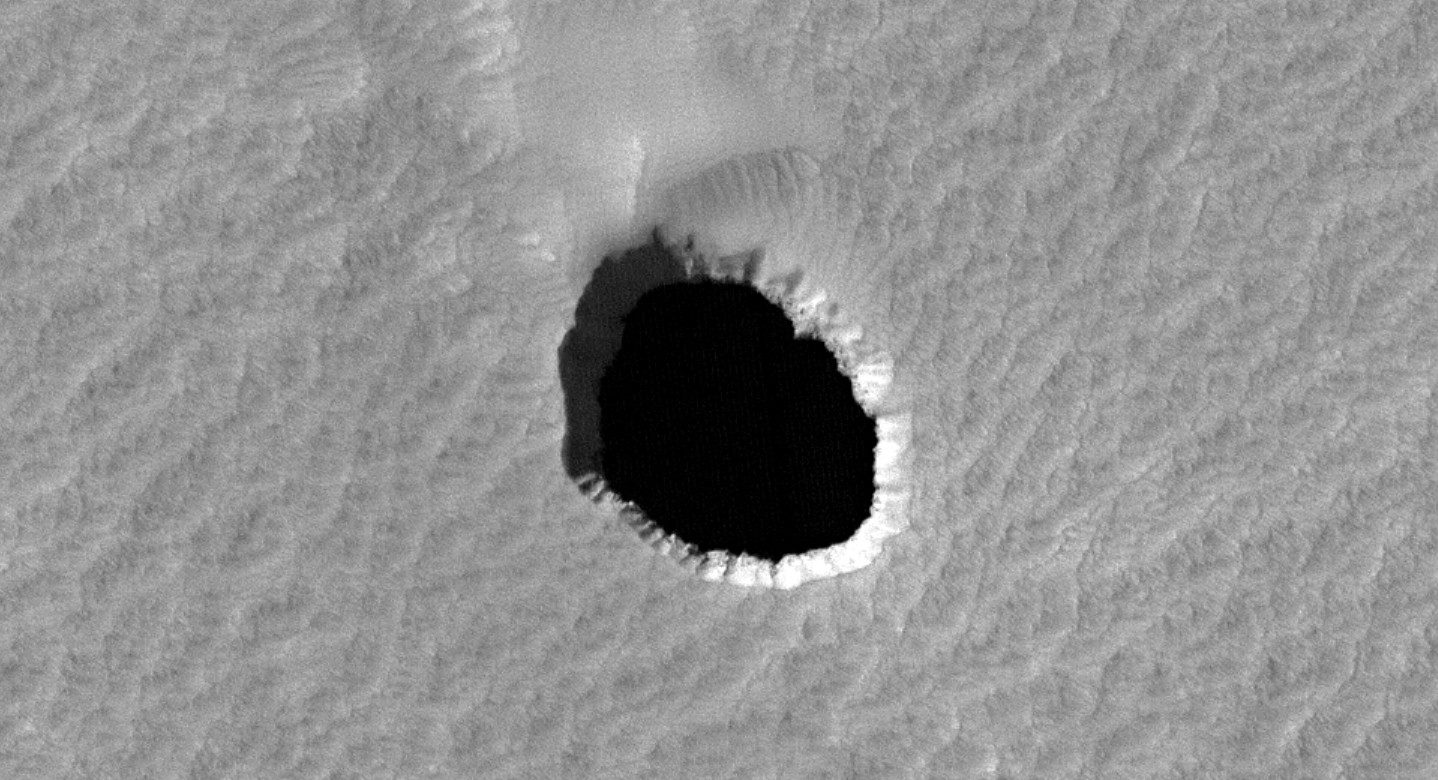Featured image: A hole with approximately 150 metres diameter, indicating a potential lava tube on Mars. Public Domain (NASA/JPL/University of Arizona).
Paper: Lava tubes on Earth, Moon and Mars: A review on their size and morphology revealed by comparative planetology
Authors: Francesco Sauro, Riccardo Pozzobon, Matteo Massironi, Pierluigi De Berardinis, Tommaso Santagata, Jo De Waele.
Editor’s note: due to an editorial mixup, two Geobites authors—unbeknownst to each other—wrote about the same paper. We encourage readers to take advantage of this opportunity to learn how two different geoscientists would describe the same exciting development in their field. The other post is here.
When you picture living on another planet, you probably don’t imagine living underground. But lava tubes – underground cave systems formed by flowing lava – are more sheltered from radiation and micrometeorites than the surface of the Moon or Mars. They are also more stable in temperature and could contain water ice. For these reasons both popular culture, such as the National Geographic Mars series, and scientists alike, have hypothesised that humans might live in them one day. Now, a new review and analysis study led by Francesco Sauro at the University of Bologna has sought to investigate potential lava tubes on both the Moon and Mars.

The team started their study by performing 3D laser scans of three lava tubes here on Earth (in Spain, Hawai’i, and Australia) to examine how they formed, and the size and shape of the caves. The authors also considered how these lava tubes look from the surface, and how this relates to the volume of the caves. This helped the team to estimate the size of lava tubes elsewhere in the solar system. While researchers can’t measure lava tubes directly on the Moon or Mars, the existence of lava tubes can be inferred from the presence of long, meandering raised channels. Holes known as “skylights”, where the roof of the lava tube has collapsed, can also give clues to the existence of lava tubes. The team knew to look for these signatures, and from their work on Earth, what these surface features can tell us about the caves beneath them. The team could therefore perform a detailed analysis of several potential lava tube cave systems on Mars and the Moon.
Their results show that lava flows on Mars could have left lava tubes up to 100 times wider than those we find on Earth. On the Moon, lava tubes could be up to 1000 times bigger. This difference is due to the effect that the lower gravity of Mars and the Moon has on volcanic processes and lava flows. The team’s review also showed that surface holes leading to potential caves on the Moon and Mars can result from a range of processes such as melting due to a meteorite impact, or faulting (which is when the crust of a planet fractures). Distinguishing between these different processes is important so that we can make a more reliable estimate of the potential size of the underground caves.
The study estimates that the roofs of such lava tubes, particularly on the Moon, are generally stable, which makes them a key target for future exploration and a potential lunar base. This is good news for space agencies such as the European Space Agency, who last year put out a call seeking innovative ideas for exploring lunar caves. In future, this could also be good news for any humans looking to set up a base inside extra-terrestrial lava tubes. Any volunteers?
Lava tubes on the Moon and Mars might be big and stable enough for humans to live in by Eleni Ravanis is licensed under a Creative Commons Attribution-ShareAlike 4.0 International License.

